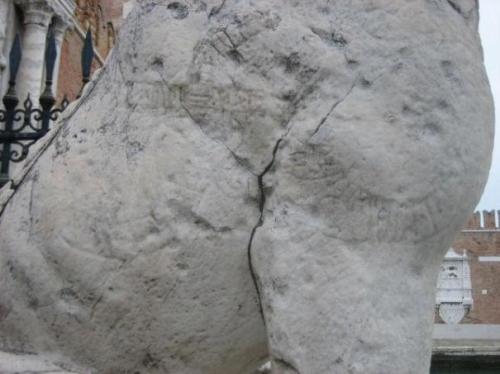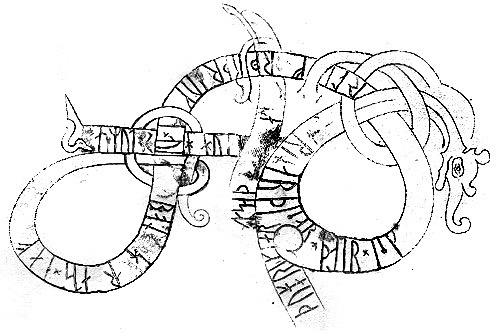Viking runes on an ancient Greek statue,The Piraeus Lion is a marble statue around 3 meters (9 feet)
Viking runes on an ancient Greek statue,The Piraeus Lion is a marble statue around 3 meters (9 feet) tall which was carved around 360 BC and had adorned Athens harbor for over 1800 years. In 1687 Greece was a part of the Ottoman Empire and the Republic of Venice was at war the empire when they laid siege to and eventually sacked the city. The Venetians looted Athens of it’s wealth, carting of many treasures and historical antiquities including the Piraeus lion. The Venetians noticed that there was a strange writing along the shoulder and flank of the lion, however no one remembered what the language was, what it said, or who put it there. The lion was carted off to Venice and put on display at the Venetian Arsenal, where it sits to this day.The origins of the writing remained a mystery until the lion was visited by a Swedish diplomat named Johann David Akerblad, who identified them as Nordic runes at the end of the 18th century. Since then numerous scholars have viewed and attempted to translate the runes. This task is greatly complicated by the fact that the runes are heavily eroded, with many completely illegible. The most widely accepted translation is from Erik Brate in 1914,The runes are believed to have been carved in the 11th century by the Varangians. The Varangians were a group of Scandinavian Vikings who sold their services as mercenaries to the Eastern Roman Empire, AKA the Byzantine Empire. The Varangians would eventually settle down in what is now Russia and Ukraine. -- source link
Tumblr Blog : peashooter85.tumblr.com
#history#ancient history#medieval history#middle ages#vikings#varangians#byzantine empire


